Kia has become a serious player in the U.S. automotive market, offering sharp styling, affordable pricing, and impressive tech. But while many of its models feature advanced infotainment, driver aids, and safety features, not all of them are equally reliable when it comes to in-cabin technology.
Some Kias are praised for seamless tech that works flawlessly year after year others are plagued by persistent glitches, software bugs, or hardware issues.
Here’s a breakdown of 5 Kia models that rarely experience tech failures and 5 that have been consistently criticized for technical problems by American drivers and reviewers alike.
Kias That Rarely Fail Tech
Kia has come a long way from its budget beginnings, especially when it comes to in-car tech. In fact, some of its recent models consistently outperform rivals by offering user-friendly interfaces, intuitive infotainment systems, and impressive reliability in the tech department. Whether it’s seamless smartphone integration, responsive touchscreens, or dependable driver-assist features, these are the Kias that rarely miss a beat.
1. Kia Telluride
The Telluride is widely regarded as one of the most well-rounded midsize SUVs in America. Beyond its solid build and ride quality, its tech suite including the UVO infotainment system, Apple CarPlay, Android Auto, and a responsive touchscreen performs with minimal issues.
Owners report high satisfaction with its driver assistance systems like adaptive cruise control and lane keep assist. Unlike in some other Kias, the Telluride’s systems are rarely plagued by freezing screens or delayed response times.
Every 2020 Kia Telluride comes equipped with a naturally aspirated V-6 engine that produces 291 horsepower and 262 lb-ft of torque. This engine is mated to an eight-speed automatic transmission, which delivers power to the front wheels in its standard configuration.
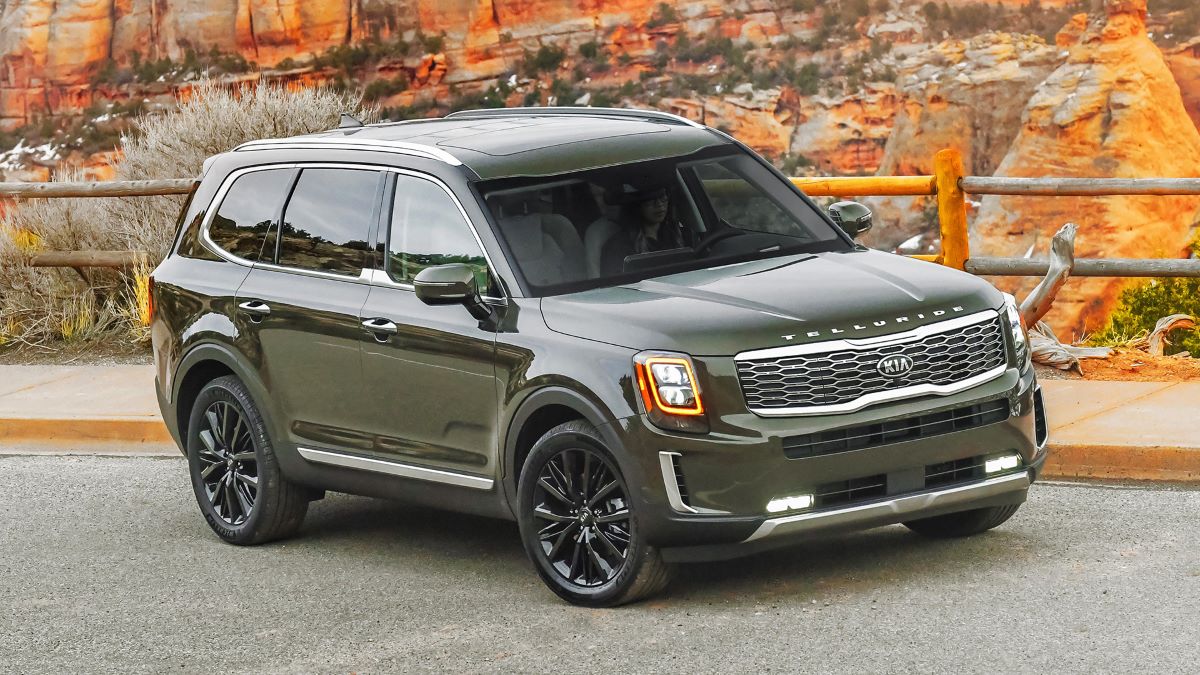
For those who need extra traction, all-wheel drive is available as an option across all trim levels. In our testing, the top-tier Telluride SX sprinted from zero to 60 mph in 7.0 seconds. That said, the large Kia didn’t feel as immediately responsive to throttle inputs at lower speeds compared to some of its turbocharged competitors.
Ride quality in the Telluride leans toward the firmer side, and rougher road surfaces can occasionally cause this three-row SUV to lose a bit of its composure. However, a self-leveling rear air suspension is offered, providing an added layer of control and comfort.
Braking performance is strong, and the steering impresses with its precision and satisfying heft. With 8.0 inches of ground clearance, the Telluride is well-prepared for light off-road ventures. It also has enough muscle to tow up to 5000 pounds when properly equipped.
2. Kia K5
Replacing the Optima, the K5 sedan delivers tech features that are both advanced and dependable. U.S. owners have praised the K5’s infotainment for being user-friendly and free from frustrating bugs.
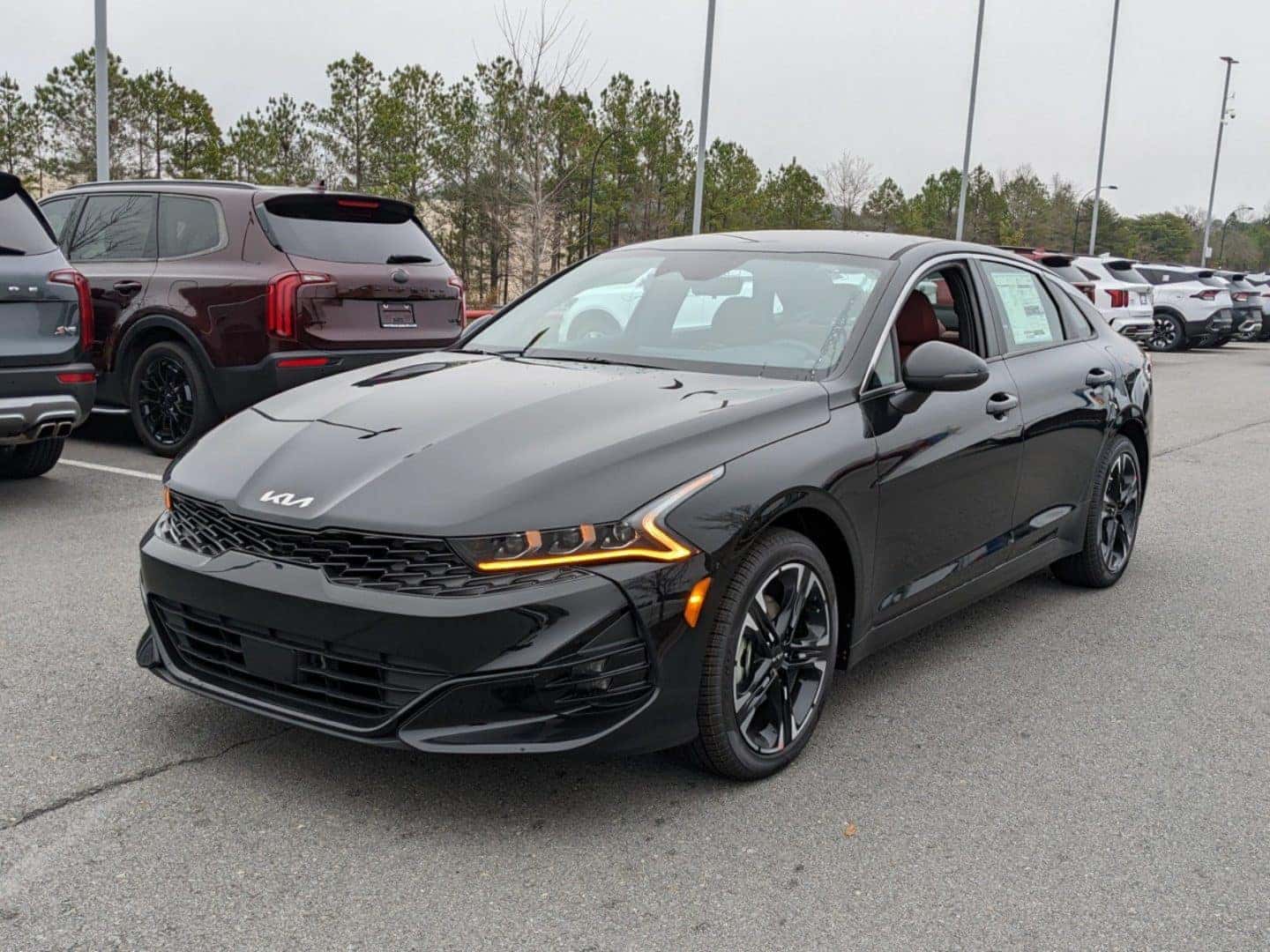
Voice controls work smoothly, and smartphone integration rarely disconnects something that’s still an issue in other brands. Its safety systems, including forward collision warning and blind-spot monitoring, generally operate with few hiccups, contributing to strong consumer confidence.
Every 2020 Kia Telluride comes equipped with a naturally aspirated V-6 engine that produces 291 horsepower and 262 lb-ft of torque. This engine is mated to an eight-speed automatic transmission, which delivers power to the front wheels in its standard configuration.
For those who need extra traction, all-wheel drive is available as an option across all trim levels. In our testing, the top-tier Telluride SX sprinted from zero to 60 mph in 7.0 seconds. That said, the large Kia didn’t feel as immediately responsive to throttle inputs at lower speeds compared to some of its turbocharged competitors.
Ride quality in the Telluride leans toward the firmer side, and rougher road surfaces can occasionally cause this three-row SUV to lose a bit of its composure. However, a self-leveling rear air suspension is offered, providing an added layer of control and comfort.
Braking performance is strong, and the steering impresses with its precision and satisfying heft. With 8.0 inches of ground clearance, the Telluride is well-prepared for light off-road ventures. It also has enough muscle to tow up to 5000 pounds when properly equipped.
3. Kia Sorento (2021 and newer)
The latest Sorento redesign brought a huge tech upgrade, and Kia delivered a well-executed experience. The available 10.25-inch infotainment screen offers intuitive controls and fast processing.
Wireless Apple CarPlay/Android Auto are missing on upper trims due to a wired-only setup, but the wired system tends to be more stable. Tech glitches are relatively rare, and safety features operate reliably. It’s a favorite among U.S. families for that reason.
The Sorento’s V-6 engine performs admirably against rivals in both the midsize two-row and three-row SUV segments. With a 0–60 mph time of 7.2 seconds, it comes close to the sportier Mazda CX-9 in acceleration, although it trails behind the more potent V-6-equipped GMC Acadia.
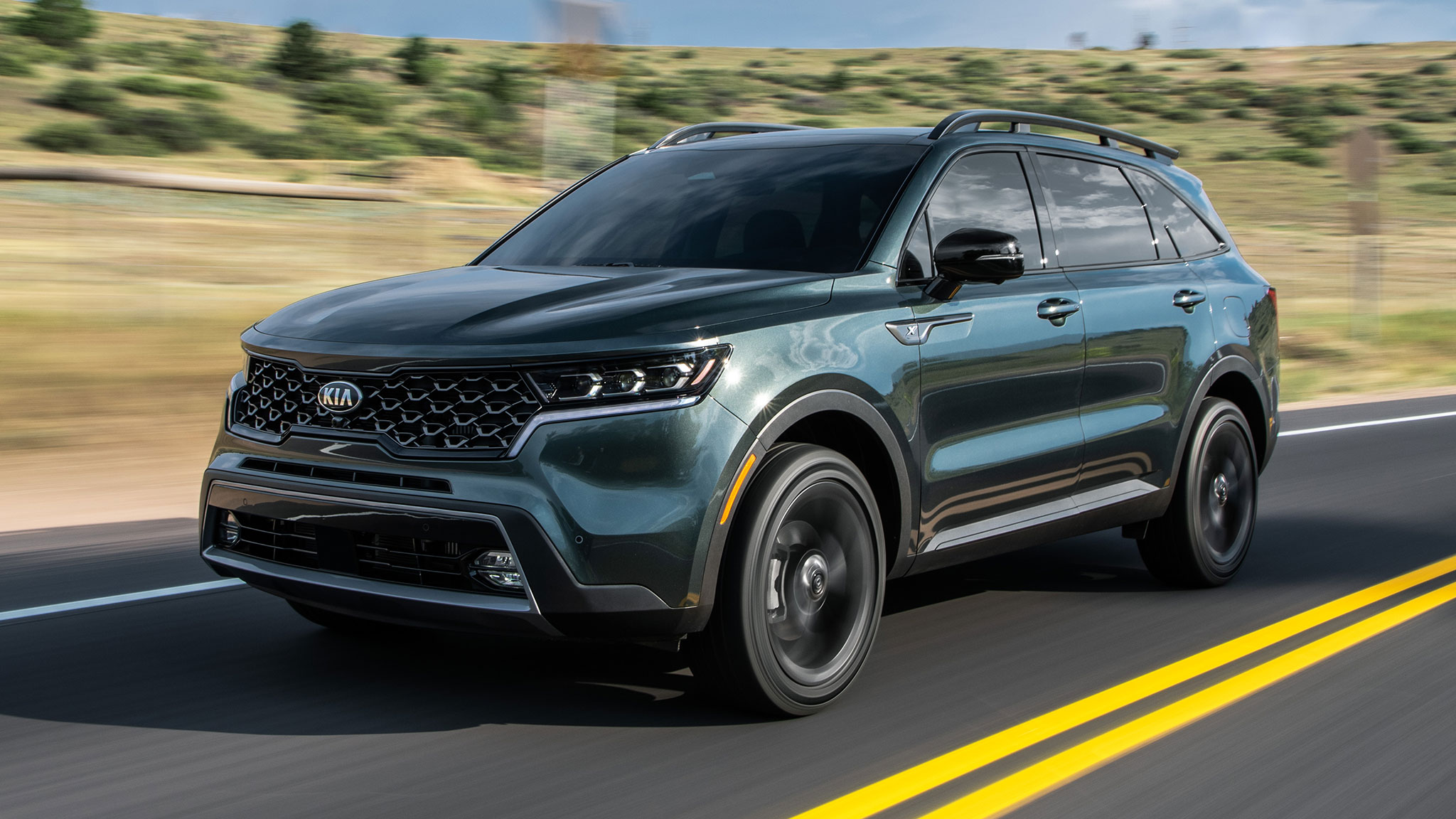
We haven’t had the chance to test the standard four-cylinder engine yet, but with just 185 horsepower, it would likely feel underpowered in a vehicle of this size.
While the Sorento doesn’t deliver the same driving enjoyment as the CX-9, particularly in terms of agility, it’s not without its strengths. It exhibits noticeable body roll during cornering, and the steering lacks feedback, giving it a disconnected feel.
Still, these flaws only become apparent when you’re pushing the SUV on winding roads. In everyday driving, the Sorento impresses with its comfort and overall balance, never coming across as unwieldy or oversized.
It features three selectable drive modes, Normal, Eco, and Sport, that tweak throttle response, steering weight, and transmission behavior. However, even with these settings, the Sorento maintains a generally relaxed and easygoing demeanor.
4. Kia Soul (2020 and newer)
While the Soul is often seen as a quirky urban vehicle, its tech has matured significantly. The infotainment interface is simple, quick to respond, and rarely has freezing or boot-up issues.
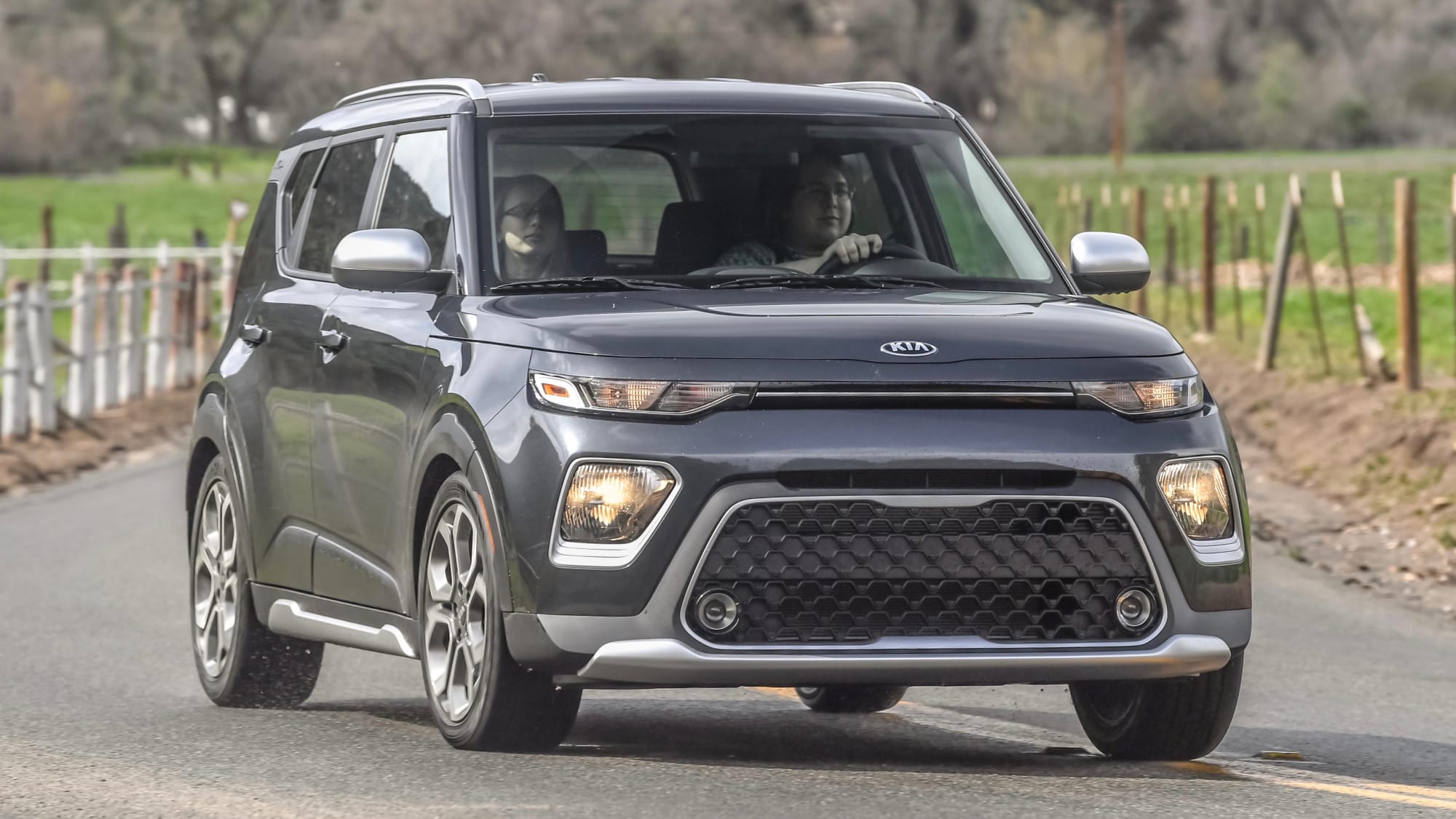
Key driver assistance tech is available on higher trims and generally functions without error. Despite being a budget-friendly vehicle, the Soul consistently avoids many of the tech reliability issues seen in similarly priced competitors.
The Kia Soul’s design, more specifically, its boxy silhouette, has always been a love-it-or-hate-it affair. But the thoroughly reworked third-generation model is almost unrecognizable from the quirky original.
While the Soul has always excelled at offering generous interior space for both passengers and cargo, the 2022 iteration stands out for delivering a significantly improved ride compared to its predecessor. It handles corners and uneven pavement with a surprising level of composure, and the steering feels precise.
Inside, the Soul’s cabin may not dazzle with premium materials, but its layout is straightforward, functional, and comfortable. Road noise is well-managed, though we noticed an increase once we stepped up to the 18-inch wheels, but even then, it remained within acceptable levels. Smartphone integration is another strong point, executed seamlessly and intuitively.
After living with a 2020 Soul for a full year, we came away impressed with its utility and comfort as a daily commuter and errand machine. It’s certainly not a speed demon, but there’s a reason it’s consistently ranked among the top subcompact SUVs, even in the absence of an all-wheel-drive option.
Most versions of the Soul are powered by a naturally aspirated 2.0-liter inline-four that produces 147 horsepower, while the range-topping Soul Turbo is equipped with a 1.6-liter turbocharged inline-four that cranks out 201 horsepower.
The base engine is mated to a continuously variable transmission (CVT), whereas the Turbo trim features a seven-speed dual-clutch automatic. Regardless of trim, front-wheel drive is standard across the board, Kia still doesn’t offer an all-wheel-drive variant.
5. Kia EV6
Kia’s all-electric EV6 is not just a high-performance EV; it also offers some of the brand’s most reliable software. The infotainment system is sleek and responsive, while over-the-air updates help keep bugs at bay. U.S. drivers have reported relatively few glitches compared to early EVs from other brands.
Charging-related tech, route planning, and smartphone apps for climate or charge monitoring also tend to work consistently. The 2025 Kia EV6 slots into the middle of Kia’s electric SUV lineup, sitting between the compact Niro EV and the larger, three-row EV9.
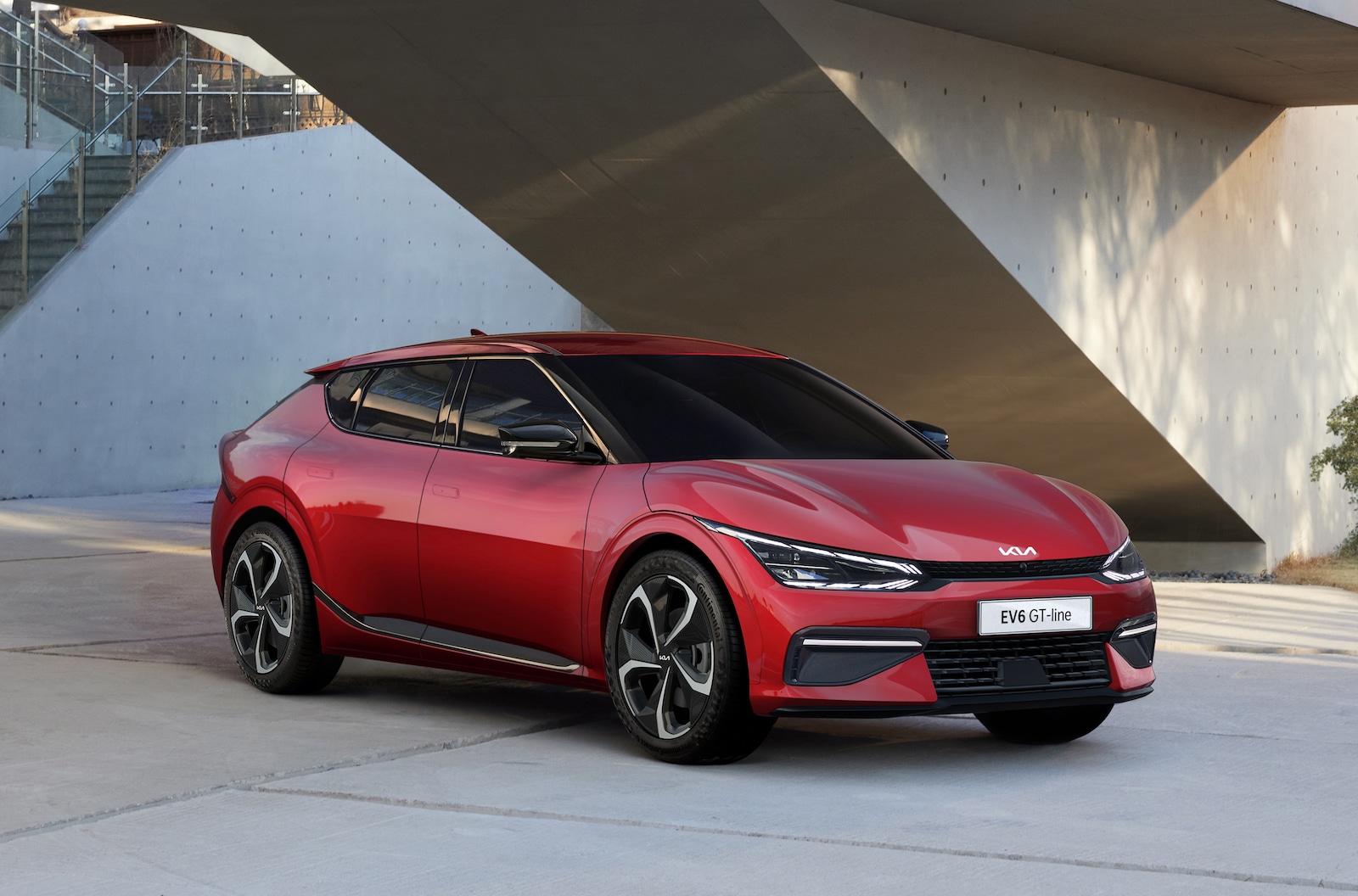
Of the three, the EV6 arguably carries the most visual flair, especially now, thanks to a refreshed front fascia and updated interior that includes a redesigned steering wheel. Buyers can choose between two battery options: a more affordable, smaller pack ideal for city driving, or a larger, long-range battery designed for extended travel.
With either rear-wheel or all-wheel drive available, an EPA-estimated range exceeding 300 miles, and a high-performance GT model boasting 641 horsepower and a projected 0–60 mph time of around 3.3 seconds, the EV6 lineup has something to offer just about every type of EV shopper.
Kias That Always Have Glitches
Not all Kias are created equal, especially when it comes to tech. While the brand has made major strides in design and innovation, a few models have earned a reputation for frustrating glitches, laggy infotainment systems, and inconsistent connectivity.
From buggy software updates to unresponsive touchscreens, these Kias can leave drivers dealing with tech headaches more often than they’d like. If reliability in your in-car systems is a must, these are the ones to approach with caution.
1. Kia Seltos (2021–2023)
Despite its popularity as a subcompact crossover, the Seltos has suffered from consistent infotainment bugs. Owners in the U.S. have reported laggy touchscreens, random reboots, and unreliable Bluetooth pairing.
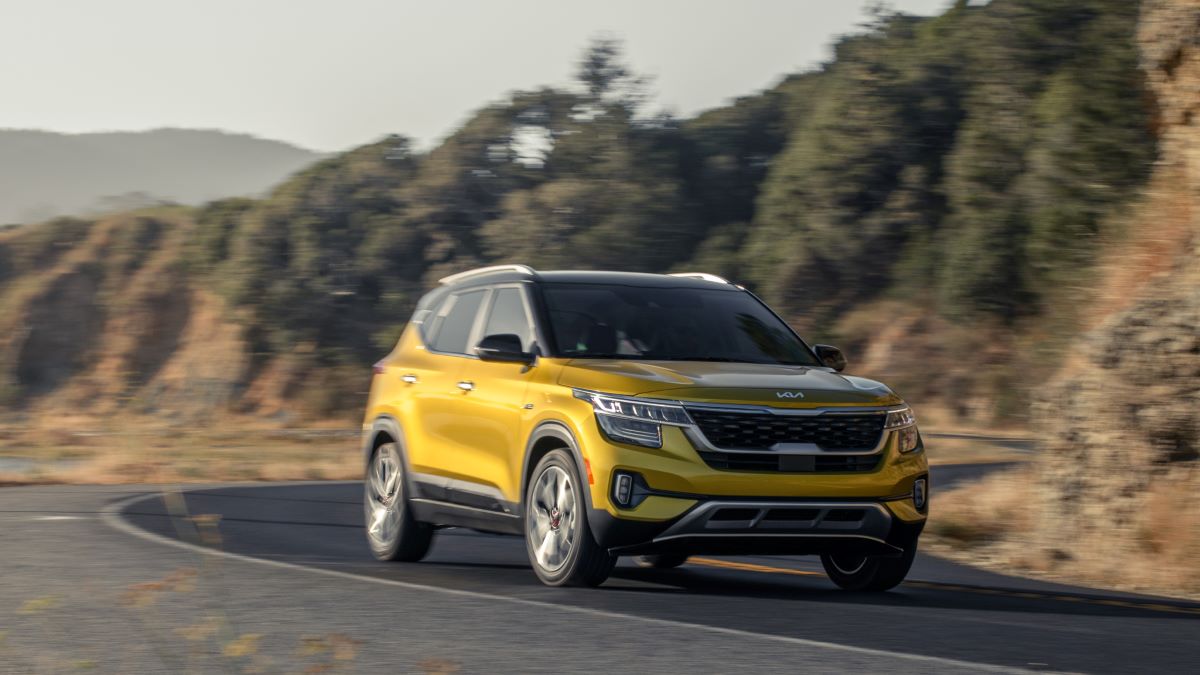
Even worse, some driver-assistance features like lane centering and adaptive cruise can act erratically, sometimes disengaging or sending false warnings. The issues aren’t always fixed with updates, making it a tech headache for some.
The 2021 Kia Seltos is a fresh face in Kia’s expanding small SUV lineup, slotting between the quirky Kia Soul and the larger, pricier Sportage. Slightly longer than the Soul, the Seltos distinguishes itself with sharp styling elements like a two-tone roof and vertically stacked headlights—details that help it stand out in the crowded extra-small SUV segment.
Under the hood, the Seltos offers two engine options: a standard 146-horsepower four-cylinder or an optional 175-hp turbocharged engine that delivers smooth, responsive acceleration. Unlike the front-wheel-drive-only Soul, the Seltos is available with all-wheel drive, giving it added traction for poor weather or light off-roading.
Inside, the Seltos impresses with upscale materials that punch above its price point. The cabin is roomy enough to comfortably seat four adults, and with the rear seats folded, it provides up to 62.8 cubic feet of cargo space, more than most competitors in its class. Whether you’re looking for style, versatility, or value, the Seltos makes a strong case in the small crossover category.
2. Kia Sportage (Pre-2023 models)
Before the latest redesign, the Sportage’s infotainment system was one of the most problematic in Kia’s lineup. Numerous U.S. drivers complained about screen blackouts, voice control malfunctions, and failure to maintain CarPlay/Android Auto connections.

Even the climate control system, which used touch-sensitive buttons in certain trims, was known to glitch. These problems heavily affected user satisfaction scores on tech usability.
The 2021 Kia Sportage is a compact SUV that bridges the gap between the smaller Seltos and the three-row Sorento. Sharing much of its underpinnings with the Hyundai Tucson, the Sportage sets itself apart with bold styling, a long list of standard and available features, and optional all-wheel drive. It’s an affordable, well-equipped option for buyers who want everyday practicality without blending into the background.
3. Kia Forte (2019–2022)
The Forte has been a hit for its affordability, but its tech has been a consistent weak spot. Many owners cite issues with the audio system cutting out randomly, touchscreen freezing, and inconsistent performance of backup cameras.
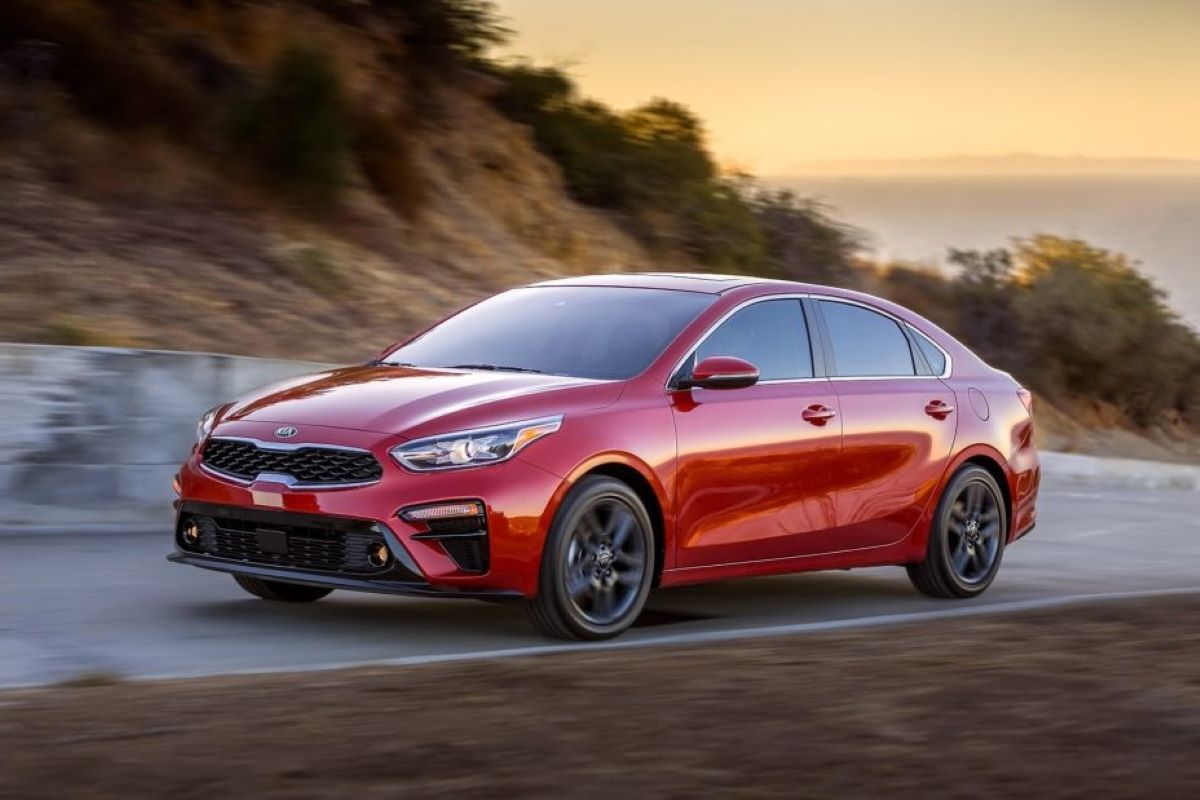
CarPlay connection issues are common, especially on base trims. And while Kia tried to issue software updates, they haven’t always solved the underlying reliability concerns.
The third-generation Kia Forte brings sharp new styling inspired by the sleek Stinger sport sedan, with a long hood and a coupe-like roofline that gives this compact car a sportier edge.
While the 147-hp 2.0-liter four-cylinder engine carries over, a new continuously variable transmission boosts fuel efficiency. The sporty Forte SX is gone, but its spirit lives on in the upcoming 201-hp Forte GT set to debut for 2020.
Even in its base trim, the Forte is packed with standard features: dual-zone automatic climate control, an 8-inch touchscreen, Apple CarPlay and Android Auto, plus key safety tech like automatic emergency braking and lane keeping assist. The top EX trim adds upscale touches like faux leather, ventilated front seats, and a hands-free trunk.
With 15.3 cubic feet of trunk space, it’s also one of the roomiest in its class. Acceleration is merely adequate, and the firmer suspension, while improving handling, may feel a bit stiff to some. It may not be quite as refined as a Civic or Mazda3, but the Forte holds its own with standout value, strong tech, and a surprisingly premium feel for the price.
4. Kia Niro (Hybrid and Plug-In, 2017–2022)
The first-generation Niro lineup especially hybrid and plug-in hybrid variants has struggled with glitchy infotainment systems and unreliable energy monitoring screens.
EV range estimates can fluctuate wildly, and the hybrid drive mode selector sometimes fails to update on the digital cluster.

U.S. drivers also report the driver assistance suite occasionally giving false alerts or failing to engage, making it one of Kia’s less dependable tech platforms.
The 2022 Kia Niro hybrid continues to blur the line between a hatchback and a subcompact SUV, offering an elevated ride height, a roomy cabin, and a wide-opening rear hatch for easy cargo loading. It’s the most traditional of the Niro lineup, which also includes a plug-in hybrid and a fully electric version.
Fuel economy is a strong suit, with the base hybrid model delivering up to 50 mpg combined, a solid figure, even if it falls a bit short of class leaders like the Toyota Prius and Honda Insight. For 2022, changes are minimal: some features have been shuffled between trims, and the old Touring trim has been replaced by a new LXS Special Edition.
While the Niro doesn’t radically change the hybrid formula, it remains a practical, user-friendly option in the segment. It’s well-equipped, surprisingly roomy for its size, and smartly priced. If you’re looking for fuel savings without sacrificing everyday comfort and cargo space, the Niro hybrid is worth a look.
5. Kia Cadenza (Discontinued)
The Cadenza was Kia’s attempt to enter the near-luxury market, but while the interior was upscale, the tech often disappointed. Many U.S. owners reported slow navigation systems, frequent software freezes, and non-responsive voice commands.
Despite offering a premium experience on paper, the glitches left a sour taste likely one of the reasons Kia pulled it from the American market after the 2020 model year. Kia’s technology has come a long way in recent years, but the brand still has inconsistencies across its lineup.
Like the Telluride, Stinger, and K900 before it, the 2020 Kia Cadenza continues Kia’s push into premium territory. It’s a standout for those who know what they’re looking for in the shrinking large-sedan segment, a refined, comfortable cruiser that delivers big on luxury without the big-name badge.
Power comes from a smooth, capable V-6 engine that suits the Cadenza’s calm demeanor perfectly. In our real-world highway fuel economy testing, the Cadenza impressed with 31 mpg. And in typical Kia fashion, value is baked right in, with a standard 12.3-inch touchscreen infotainment system and a full suite of advanced driver-assist features.
The 2020 Cadenza receives a thoughtful update with revised exterior styling and a redesigned dashboard. Technology takes a leap forward, too, Kia adds a larger 12.3-inch infotainment display and makes safety tech standard across the board.
That includes automated emergency braking with pedestrian detection, lane-keeping assist, and adaptive cruise control that uses the standard navigation system to prep for upcoming road curves. It’s a fitting refresh, especially since Kia has confirmed this will be the final model year for the Cadenza in the U.S.
Pricing starts at $38,885 for the Technology trim and tops out at $44,585 for the Limited. While the Technology trim is well equipped, it’s hard to ignore the Limited’s upscale offerings, leather upholstery, customizable ambient lighting, 19-inch wheels, and more. These features push it close to genuine luxury territory, but at a significantly lower price.

Under the hood, the 290-horsepower V-6 doesn’t outpace competitors like the Nissan Maxima, but it is refined and competent. The 8-speed automatic transmission feels slightly unpolished at times, though the Smart driving mode helps smooth things out.
Throttle response is soft initially, which makes for easy, drama-free driving around town, but a heavier foot is needed for quicker starts. Our test model clocked 0 to 60 mph in 6.7 seconds, a decent result, though the Maxima beat it with a 5.7-second run.
That said, comfort is where the Cadenza shines. The suspension handles bumps with grace and keeps the ride settled, even over rough pavement. Steering is tuned more for ease than excitement, and while it won’t thrill on a twisty road, it’s a confident and stable highway cruiser.
While the EPA rates the Cadenza lower than rivals like the Avalon and Maxima, 27 mpg on the highway, our 200-mile real-world test returned a more impressive 31 mpg. That’s strong performance for a V-6-powered full-size sedan.
The Cadenza’s cabin feels straight out of the luxury playbook. Materials are upscale, layout is intuitive, and visibility is excellent. Our Limited test model featured leather-trimmed seats with elegant quilted panels, plush and supportive. However, the ventilated front seats left us underwhelmed; the airflow was so faint, it was hard to tell they were on.
In terms of space, the trunk handled six carry-on suitcases, putting it right in line with the competition. However, in an effort to boost structural rigidity, Kia fixed the rear seatbacks, limiting flexibility. A center pass-through is your only option for longer cargo. If maximum cargo versatility is your goal, the Nissan Maxima’s fold-flat second row is the better airport hauler.
Kia didn’t skimp on tech. All Cadenza trims come with the 12.3-inch infotainment touchscreen, complete with Apple CarPlay, Android Auto, and in-dash navigation. You also get UVO eServices, which handles diagnostics, maintenance alerts, and emergency assistance. Multiple USB ports are included, along with a standard wireless charging pad.
Kia continues to dominate the warranty game. The five-year/60,000-mile limited warranty and ten-year/100,000-mile powertrain warranty remain industry bests. However, don’t expect any complimentary scheduled maintenance, you’ll be footing the bill for regular service.
Models like the Telluride and EV6 have set new standards for reliability in infotainment and safety tech, while others like the older Sportage or the budget Forte continue to lag behind.
For U.S. consumers seeking a reliable daily driver with minimal tech frustrations, sticking with the latest generation of Kia’s most refined models is key. As always, individual experiences may vary, and keeping infotainment systems updated and serviced can also play a role in long-term tech reliability.

